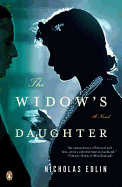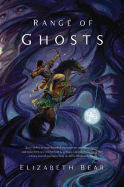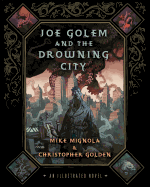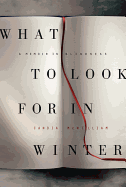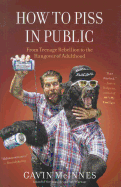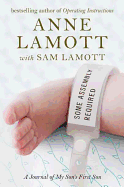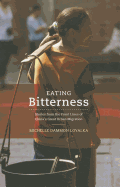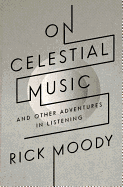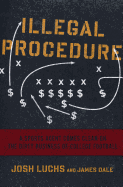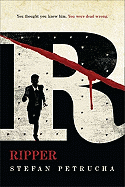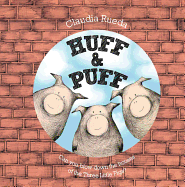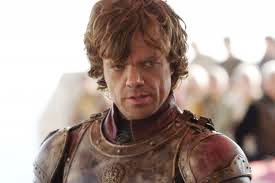 This Sunday, Games of Thrones returns to HBO for its second season, which is based on A Clash of Kings, the second volume in George R.R. Martin's A Song of Ice and Fire series. Now at five volumes with two more (and possibly others) on their way, the series continue to attract new readers: as of last fall, the book series had nearly 12 million copies in print. Many readers were drawn in by season one last year, and it's likely this new season will also create new fans. The HBO productions, under the able direction of David Benioff and D.B. Weiss, are vivid, faithful renditions of the remarkable books they're based on--and as in the case of The Hunger Games, reading the book helps viewing the show.
This Sunday, Games of Thrones returns to HBO for its second season, which is based on A Clash of Kings, the second volume in George R.R. Martin's A Song of Ice and Fire series. Now at five volumes with two more (and possibly others) on their way, the series continue to attract new readers: as of last fall, the book series had nearly 12 million copies in print. Many readers were drawn in by season one last year, and it's likely this new season will also create new fans. The HBO productions, under the able direction of David Benioff and D.B. Weiss, are vivid, faithful renditions of the remarkable books they're based on--and as in the case of The Hunger Games, reading the book helps viewing the show.
And next Wednesday, the 3D version of Titanic--one of the most popular movies in history--launches in theaters across the country, just a week before the April 10 centennial of the sinking of the ill-fated liner. More next week on that tragic tale and the many books it spawned. --John Mutter
The Widow's Daughter
by Nicholas Edlin
The ghost of the old-fashioned romantic war novel comes gloriously to life in Nicholas Edlin's hypnotizing story of lust and betrayal during the Second World War. Replete with dusty drawing rooms, sinister butlers, Axis spies and fresh-faced Yanks who brawl with world-weary locals, The Widow's Daughter unspools an irresistible, darkly lovely web of intrigue, arriving at an epic and satisfying conclusion. Luxuriously paced with note-perfect tone and graceful prose, it gives readers a pleasure too smart, too refined to inspire any guilt.
Peter Sokol is an American surgeon stationed in New Zealand. Divorced, disaffected and more interested in art than a medical career, Sokol finds his hardened senses lit aflame by a mysterious local beauty. Emily's family, European immigrants tumbling into war-time penury, seem eager to auction their daughter to either Sokol or Cartwright, who is Sokol's colleague, nemesis, former brother-in-law and a widely acknowledged horse's ass. Emily clearly prefers Sokol, but an air of gloomy foreboding--and the fact that Sokol is remembering the story from an Emily-less future--indicate dark forces will doom this passion.
Edlin's choice to set the tale amid the largely-unexamined American presence in New Zealand allows him to take the reader to a forgotten corner of the war, a place where soldiers with overflowing amounts of money to spend force locals to endure a boom in licentiousness and drunkenness (along with the casual cluelessness of the occupying troops). It's a new and welcome perspective, and it adds just the right amount of modernity to this perfect execution of a classic form. --Cherie Ann Parker, freelance journalist and book critic
Discover: A greatly satisfying update of the old-fashioned romantic war novel.
Science Fiction & Fantasy
Range of Ghosts
by Elizabeth Bear
Even a reader completely unfamiliar with Elizabeth Bear's work will be able to tell within the first few lines of Range of Ghosts that she is a seasoned professional. Her prose is lean, elegant and immediate; her world-building subtle and convincing. The world of the Eternal Sky is richly imagined, but Bear is careful not to offer too many details all at once. Rather, she allows us to discover this world as though we were travelers passing through, gleaning culture, history and mythology though its fabulous landscapes and the characters that people them.
Bear is not afraid to put those characters through hell, either: in the opening scene one protagonist staggers across a battlefield with a gaping throat wound; soon after, we encounter the once-princess Samarkar just as she's given up her ability to have children. Through their suffering, Bear's lead characters become sympathetic and accessible, and their ability ultimately to conquer the odds makes them believable heroes.
Range of Ghosts is, at its heart, a classic adventure story that calls on all of the old favorite tropes--good versus evil, the unlikely hero, swords and sorcery--and somehow makes them real, almost prosaic. The story never falls into the trap of melodrama, although the stakes are certainly very high. Instead, with patience and skill and a refreshingly light touch, Bear creates an absorbing universe that is easy to get lost in and difficult to leave. --Katherine Montgomery, book nerd
Discover: Bear convincingly creates a world in which even the Sky itself is a fully realized character.
Angelmaker
by Nick Harkaway
Most of Angelmaker, Nick Harkaway's second novel (after The Gone-Away World), takes place in a fantastical London that combines the edgy urban fantasy of China Mieville with the cerebral action-movie pacing of Neal Stephenson. (As in the classic Cryptonomicon, the contemporary narrative is driven by a long-forgotten scheme from World War II.) Joe Spork's father was a gentleman thief of mythic proportions--think the Kray brothers with the psychopathic edges shaved off and replaced with a Raffles-like charm. Joe rejects that life, barely making ends meet repairing clocks and other mechanical antiques. Then a particularly weird assignment drops him into a world of robot bees, killer aesthetic monks (no, that's not a typo) and an aging ex-spy named Edie, who roams around London with her blind dog.
Harkaway revels in the blockbuster approach. It isn't just about pushing the accelerator all the way to the floor, but also about a conscious steering of scenes to over-the-top effects. When Joe finds a gift his father left behind, it builds up to an almost ridiculously dramatic and ostentatiously self-conscious climax. On the other hand, it's so much fun that most readers will be willing to play along. Edie's flashback scenes, recalling her education in espionage and her cross-dressing battles against Shem Shem Tsien, the Opium Khan, are both stirring and hilarious. Angelmaker takes the piss out of the modern techno-thriller, infusing it with a sleek retro style and a sexy sense of humor--both of which mark Nick Harkaway as a writer to watch.-- Ron Hogan, founder of Beatrice.com
Discover: Harkaway's almost-not-quite-realistic world is one in which readers will gladly immerse themselves.
Graphic Books
Joe Golem and the Drowning City
by Mike Mignola and Christopher Golden
Molly McHugh is a bright young girl in the drowning city of lower Manhattan. She's Felix Orlove's assistant and witness to his true talent in contacting the dead, until a being from another dimension connects through Felix, killing him. Thus begins the wild, weird romp of Joe Golem and the Drowning City. As Molly flees from the strange man-shaped, gas-masked creatures sent by Dr. Cocteau to capture her, she is rescued by Joe, a hulking, super-strong man with a mysterious past and an even more mysterious benefactor--who takes Molly in as the last great hope in saving the universe from the mind-boggling horror from beyond.
Joe Golem is the second collaboration between Mike Mignola and Christopher Golden (after 2007's Baltimore, or, The Steadfast Tin Soldier and the Vampire). Mike Mignola may best be known for his Hellboy comic book series and its various spinoff titles, and this story is sparingly illustrated in his trademark style, filled with heavy contrast, tentacles and Lovecraftian horrors at every turn, while Golden applies his experience with dark fantasy and teen thriller novels to the story with good effect.
The sense of dread here is palpable, with both prose and picture creating the mood. The characters are both over the top and disturbingly realistic, and the city itself, shown within the upper stories of older buildings in the flood area, reinforces the plot and the tone of the novel. Fans of deep characterizations and quirky tales will enjoy this tale of weird science fiction. --Rob LeFebvre, freelance writer and editor
Discover: A young girl and her stolid companion are the last line of defense against Lovecraftian horrors.
Biography & Memoir
What to Look for in Winter: A Memoir in Blindness
by Candia McWilliam
Blindness: possibly the worst-case scenario for a woman who makes her living reading and writing. In What to Look for in Winter, Scottish novelist Candia McWilliams (Wait Till I Tell You) slowly unveils her 2006 descent into the physical condition of blepharospasm--the involuntary twitching of one's eyelid--in her case, a rarer form of the illness clamped her eyelids shut. With no outward vision, McWilliams zigzags inward, as she attempts to understand the illness that has made her functionally blind. "My eyes work quite well," she explains, "but my brain has decided that they must be shut and that its self-allotted job is by no means to permit them to open."
In this bluntly honest memoir, McWilliams puts her entire past (including her mother's suicide and her own alcoholism) under the microscope as she bumps and fumbles her way through her physical surroundings. After years of muffling, winter-like sightlessness, she comes to a possible psychological basis for her non-seeing "shameful pain." However, despite remorse, she writes, "I must put myself out into the warm and light, that I am convinced I do not deserve." With the undertaking of a painful, two-part operation called the "Crawford Brow Suspension," McWilliams regains sight, although the condition is just "held off" rather than cured. What to Look for in Winter is an intense and meandering journey through the bittersweet landscape of a talented writer's life. --Lee E. Cart, freelance writer and book reviewer
Discover: A Scottish writer's candid examination of her life while hindered by a rare form of blindness.
How to Piss in Public: From Teenage Rebellion to the Hangover of Adulthood
by Gavin McInnes
How to Piss in Public is a book that will punch you in the gut--and other, less-salubrious places--then make you ask for more. It's a memoir of one of the hardest, most unapologetic human beings to grace the planet over the past 40 years, the story of Vice magazine founder Gavin McInnes as only he could tell it.
McInnes covers it all: drugs, rock and roll, greed, writing, journalism, sexual escapades and alcohol--often all at once. His sense of humor is one that polite readers may cringe at, but the rest of us will laugh until our eyes tear up. The considerable volume of sexual encounters he describes would sound like bragging in any other context; here, McInnes's authorial voice gives them an air of documentary truth, warts and all. The amount of alcohol he's imbibed and the number of drugs he's done would have killed a lesser man--and yes, there are stories about that as well.
The progression of McInnes from a teenage punk rock fan to the founder of Vice and then, in his 40s, a rich married man with kids takes up most of the book. He is unapologetic about his drug and alcohol (ab)use; McInnes wants his readers to laugh through the pain of every story about death, overdose, loss of fortune and humiliation. Somehow he survived and is now able to write about it all with humor and, oddly enough, a rough sort of grace. --Rob LeFebvre, freelance writer and editor
Discover: An unapologetic memoir of excess and a few lessons learned, though maybe not the expected ones.
Some Assembly Required: A Journal of My Son's First Son
by Anne Lamott and Sam Lamott
From Operating Instructions, the 1993 memoir that remains a popular new-parent-support book, through subsequent spiritual memoirs that honestly revealed the joys and frustrations of parenting, Anne Lamott's son, Sam, became "our boy" for many readers. So they may do a double take at the subtitle of Lamott's Some Assembly Required, which describes it as "a journal of my son's first son." (Sam's a FATHER?!?) Thus Lamott invites readers into--can it be?--her life as a grandmother, and Sam's life as a dad.
While this is Anne's memoir, with her trademark style of sharp humor mixed with witty philosophy and poignant observations, she includes interviews with Sam, so he's telling his own story. It's not a he-says-she-says exchange; Sam's contributions are straightforward reflections on his life as a 20-year-old new father with a headstrong girlfriend who's still fulfilling his obligations as an art student.
Longtime Lamott fans will reconnect with many familiar faces and meet some new ones: Amy, Baby Jax's mother; Amy and Sam's friends; and Jax himself. Readers unfamiliar with Anne's forthright self-deprecating humor, or her ability to mix a quick prayer and a judicious use of colorful language in the same paragraph, may need a few pages to get her rhythm.
What's obvious throughout Some Assembly Required, though, is the love and support this family shares. Their common passion is baby Jax, showered with affection amidst the complications his unexpected arrival brings. Anne Lamott has a gift for putting life in perspective. We feel glad for Sam and his family that she's the Nana. --Cheryl Krocker McKeon, bookseller
Discover: A sequel of sorts to Operating Instructions follows the first year of Anne Lamott's grandmotherhood.
Social Science
Eating Bitterness: Stories from the Front Lines of China's Great Urban Migration
by Michelle Dammon Loyalka
China's rapid growth and urbanization has come at the expense of a huge investment of human capital--underpaid and overworked rural migrants, peasants from the countryside who came to the city seeking a better life. These industrious individuals raised buildings, laid highways, swept streets, shined shoes, cleaned homes and sold produce on street corners--cheap labor to fuel China's single-minded march toward capitalism, the friends without benefits. And, over the next two decades, another 300 million migrants are expected to follow them to China's glimmering showcases of modern urbanism.
These downtrodden masses are the subjects of Michelle Dammon Loyalka's Eating Bitterness, as she offers a sympathetic ear to eight residents of Gan Jia Zhai, a village in the city of Xi'an on the verge of demolition: the bicycle-peddling knife sharpener; the husband-and-wife vegetable vendors who earn a pittance; the nanny who tends to strangers while leaving the care of two daughters to relatives; a free-spirited recycler who job-hops as the mood pleases; and the nouveau riche proprietor of a convenience store chain with a secret past.
"In the three decades since the country's economic reforms began," Loyalka writes, "rural and urban Chinese alike have set their sights on material progress with single-minded devotion, driven by the belief that material prosperity is an essential foundation for just about everything else." Urban Chinese may not think twice in their quest to exercise eminent domain, but they can ill afford to ignore their neighbors. --Nancy Powell, freelance writer
Discover: How rural migrant workers and peasants contributed to the growth of China's modern urban empire.
Essays & Criticism
On Celestial Music: And Other Adventures in Listening
by Rick Moody
Fans of Rick Moody's discursive, word-drunk fiction are well aware of how effortlessly he uses music to help achieve cohesive, emotionally powerful scenes. The essays in On Celestial Music reveal how integral music is to Moody's creative process and its relevance in re-knitting his life after hitting a drug- and drink-fueled rock bottom.
These essays are uniformly smart and well-crafted. They are psychologically acute, literate and even offer something akin to spiritual solace (much like the songs they discuss have done for Moody). Some of the high points include a dissection of five Wilco songs, a long recap of Pete Townsend's career and enigmatic personal life and a beautiful appreciation of the modern sacred classical composer Arvo Pärt's work. The essay on Pogues frontman Shane McGowan, a genius of lyric, song and boozy self-destruction, is a perfect marriage of subject and essayist. Finally, though it is only a short aside, Moody's thoughts on the Beatles' song "Golden Slumbers" is such a gem of wise observation on how these mundane bits of disposable pop become instances of the sacred, pointers toward an underlying meaning and design to life, that it alone is worth the price of admission.
On Celestial Music is a wonderful collection for fans of great writing and great music and for those who trying to find their own sacred chord progression in our hectic modern lives. --Donald Powell, freelance writer
Discover: Essays that offer insight and a measure of wisdom about music's place in modern life.
Sports
Illegal Procedure: A Sports Agent Comes Clean on the Dirty Business of College Football
by Josh Luchs and James Dale
The University of Miami's decision to withdraw from bowl games after the 2011 college football season followed claims by former "booster" (and currently jailed Ponzi schemer) Nevin Shapiro that he illegally lavished booze, parties, hookers and cash on players. According to former sports agent Josh Luchs, the Hurricanes' alleged scandal is just an extreme example of what has become routine practice among sleazy sports management types--paying college players in hopes of buying a piece of later NFL success. In this breathless tell-all, Luchs details two decades of NCAA violations committed in pursuit of the most lucrative players. It's a wild read, full of outrageous anecdotes involving big names, but along with the gossipy thrills, Illegal Procedure also provides an undeniable argument for changing the current system.
This is not Luchs's first blow of the whistle: he participated in an explosive 2010 Sports Illustrated article on graft in college sports and he continues to speak on panels and before hearings. But Illegal Procedure allows Luchs to explain more fully how he fell into such an unethical role. It also allows him to drop more tantalizing stories about clients who do things like keep Grey Goose vodka in their Gatorade bottle or run off with a Mercedes rented with Luchs's credit card.
Luchs attempts to offer correctives, but his ideas (such as paying college players outright) are already familiar sports-talk fodder. While Luchs's answers to the problem may not be remarkable, his up-close examination of the corruption--and its effects on the game and players--certainly is. --Cherie Ann Parker, freelance journalist and book critic
Discover: A former sports agent exposes the corruption involved in recruiting college footballers for the NFL
Children's & Young Adult
Georgia in Hawaii: When Georgia O'Keeffe Painted What She Pleased
by Amy Novesky, illus. by Yuyi Morales
This lushly illustrated picture book recounts an episode in Georgia O'Keeffe's life that offers young readers insight into the painter's artistic style and her values.
In February 1939, O'Keeffe arrived in Hawaii at the request of the Hawaiian Pineapple Company (later known as Dole), which commissioned two paintings to advertise their pineapple juice. She wanted to stay near the pineapple fields, to observe "the sharp and silvery fruit, quite strange and beautiful." But the company said only the workers could stay there, and gave her a pineapple to paint that had already been picked. Yuyi Morales (My Abuelita) portrays O'Keeffe's defiant stance at this response, then fills the pages with images of what she painted instead: mountains and volcanoes, feathered fishhooks and flowers. One image depicts O'Keeffe wreathed by birds of paradise, "foot-long heliconia" and nana honua, which also grace the endpapers so readers can identify the flowers. Novesky's (Elephant Prince) description of Hawaii appeals to all five senses, through "the scent of burning sugar" in the mill town of Koloa, and the feel of rain on the artist's skin in Maui.
The author convincingly describes O'Keeffe's change of heart toward the pineapple company: "She thought about Hawaii and all that it had given her. She decided to give the company what they wanted." We also see, however, that she paints the pineapple in her own way. Morales imagines the painting's beginnings as a white-hot sun, with green spikes spreading out like rays, as the pineapple bud symbolizes a luminous gift that sent O'Keeffe on a journey to discover an enchanted cluster of islands. This snapshot of Keeffe's spirit and artistry is sure to send many children off to discover more about her life and work. --Jennifer M. Brown, children's editor, Shelf Awareness
Discover: An episode in the life of Georgia O'Keeffe that illuminates her strong character and the deep of love of nature that infused her artwork.
Ripper
by Stefan Petrucha
Stefan Petrucha's (Dead Mann Walking) masterful combination of historical facts, mystery and steampunk make this novel set in 1895 New York City a standout. Jack the Ripper's murderous streak stopped almost as suddenly as it began. The killer was never caught. What if the rampage stopped because Jack crossed the Atlantic to find his son?
When 14-year-old orphan Carver Young breaks into Ellis Orphanage's records, he discovers in his file a single mysterious letter from his father with the name torn off. Carver has one last chance at adoption and one last hope for finding his father. He writes to the only man he believes can help him: New York City's new police commissioner, Theodore Roosevelt. Though it seems as though his letter has been ignored, Carver is not: he's adopted by the strange and surly Mr. Hawking. Hawking turns out to be a highly skilled detective working with a top-secret agency, the New Pinkertons. Under his mentor's watch, Carver begins searching for his father and notices disturbing ties between his father and the apparent serial killer targeting socialite women. Carver wonders who his father truly is, whom he can trust and what he may have inherited from his father.
Fans of steampunk will delight in the gadgets of the New Pinkertons, from stun batons to auto-lock picks. The author incorporates excerpts from actual letters sent to Scotland Yard by the real Jack the Ripper and includes a handy "Character and Gadget Glossary," detailing the truth behind the characters and their fanciful gizmos. In this skillfully imagined, thrilling mystery, Petrucha keeps readers guessing to the last pages. --Kyla Paterno, retail coordinator and blogger, Garfield Book Company
Discover: Fourteen-year-old Carver Young, who's in a race against time to find his father, who may be the infamous Jack the Ripper.
Huff & Puff
by Claudia Rueda
Youngest fans of the Three Little Pigs will feel both smart and indispensable in this interactive paper-over-board twist on the classic.
Why does the porcine trio peer out of a die-cut hole in the cover? So children can do the huffing and puffing and play the part of the Big Bad Wolf. When we first meet the pigs, they are reading (etiquette and recipe books.) Next we see the pink heroes hauling their requisite straw, wood and bricks.
Claudia Rueda (No; My Little Polar Bear) distills the action to its bare essence. Each builds his house, then smiles through the window. But then comes the line, "One wolf huffing and puffing," on the left, while on the right, "Huff & Puff" appears in bold black stenciled letters, with a hole cut out of the middle of the page. Turn the page, and the straw (or wood) scatters willy-nilly with the pig exposed (except for an apron), bowl of eggs and whisk in hand (the first and second pigs are "not happy"). But of course, "Third pig is happy," because "wolf" can't blow down his house. Perceptive toddlers will notice that (A) the pigs do not look afraid and (B) they seem to be up to something with their eggs and bowls. Let's just say the three pigs knew we were coming, so they baked.... Children will want to follow the pigs on the endpapers right back to the beginning. Sure to be a family favorite. --Jennifer M. Brown, children's editor, Shelf Awareness
Discover: A pared-down interactive twist on The Three Little Pigs certain to bring out the wolf in everyone.


